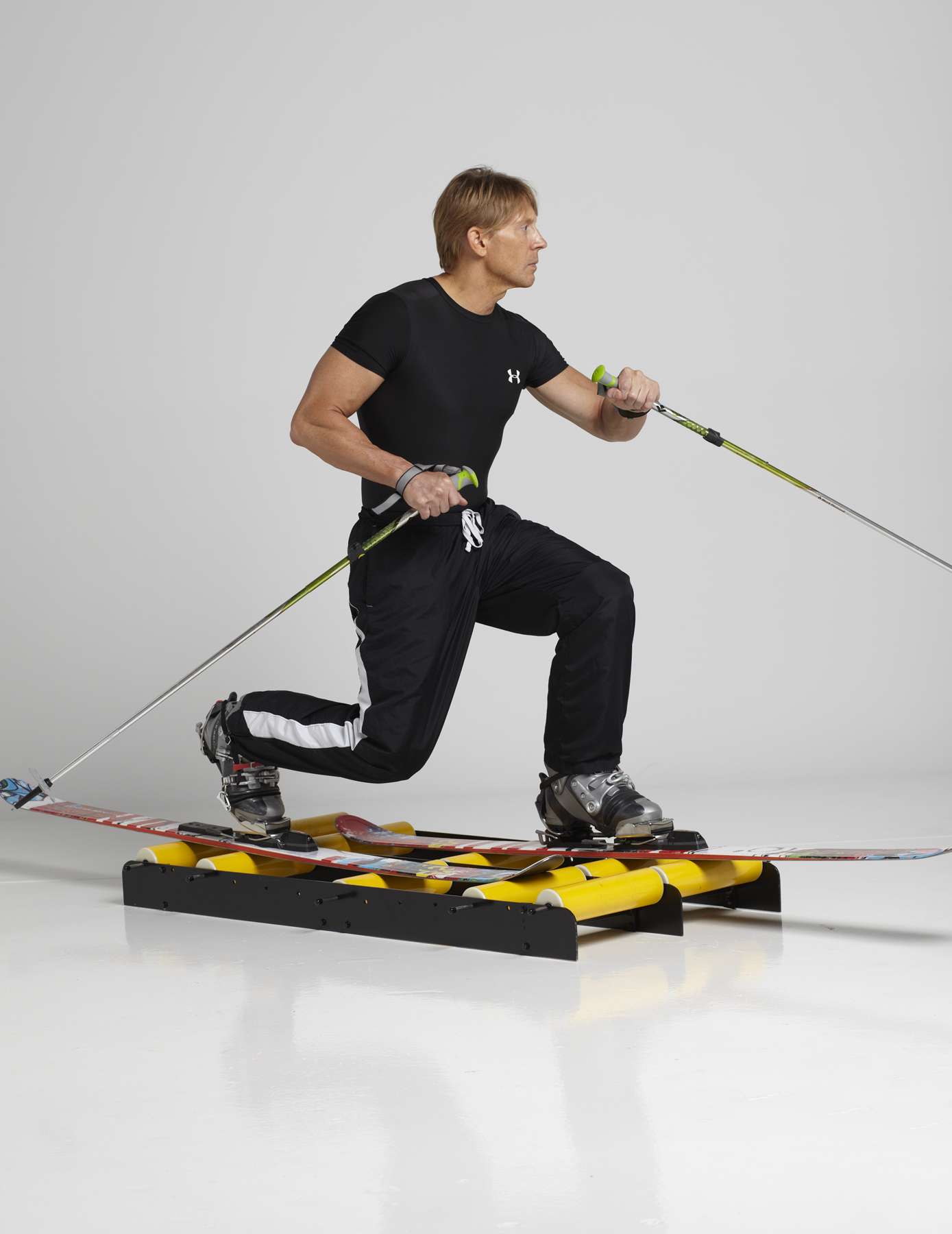Skiers use their entire body when they’re working a slope, whether in a race, skiing moguls for recreation, or even just noodling around on a bunny hill. And there’s no better way to get ready for the ski season than through strength training for a couple of months before the first flakes fall.
Skiing is an example of ultra-dynamic movement; you’re not only moving downhill at a rapid pace, you’re making strong lateral moves across the slopes to control your speed and direction. If you’re a competitive skier or like to ski moguls, the demands you’ll place on your body are explosive as you use your legs like pistons to stay in contact with the snow and increase your speed.
Develop a Strong Core and Upper Body – and Powerful Legs
While some trainers recommend machines, like the Life Cycle and Nautilus systems, many others see free weights as a more natural environment in which to work, one that demands a skier’s complete attention and challenges them across a range of motions. Just like skiing a gnarly slope, there’s no one holding your hand when you’re trying to do a one-legged dumbbell squat. After all, good skiing is about balance, strength and reacting to change, just like strength training with free weights.
In general, a run – be it a downhill or slalom race, or just a recreation trip down the slope – has only a few major components:
- The start: As a racer or weekend skier, it’s often your ability to get a good push out of the gate and accelerate as quickly as possible by skating in strong, explosive strides onto the course that can turn a good run into a great one;
- Turning: The ability to maintain an optimum course on the slope, whether for speed or maneuverability, across differing snow conditions and at varying speeds; and,
- The tuck: Being able to maintain a streamlined position for speed whether on the ground or in the air, and to react to sometimes wildly challenging changes in terrain.
Skiing is a full-body exercise. Many skiers concentrate only on their lower bodies, neglecting their core and upper-body strength. That’s a mistake that results in injuries on the slope, lost time and loss of control. Aggressive skiing also requires a great deal of flexibility in the ankles, knees and hips, all of which can be addressed through strength training.
What’s Involved in Strength Training for Skiing
If you’re serious about skiing better, you need to incorporate a “buffet” of strength training and conditioning that addresses:
- Flexibility
- Core strength
- Upper body strength
- Lower body strength (with plyometrics)
- Agility and balance training
- Aerobic and anaerobic conditioning
How to Get Strong for Ski Season
Start 12 weeks out from your season with a three- or four-day-a-week training plan.
Early on, look at a 3:1 mix of weight room to general conditioning. The extra time in the weight room will pay huge dividends in strength on the slopes. Focus on:
Legs
- Barbell Squats
- Dumbbell lunges
- Step ups
- Jump squats
Upper body
- Curls
- Triceps extensions
- Bench press
- Push presses
- Bent over rows
Try to work an array of core exercises into your lifting routines and look to include some plyometrics.
After four weeks, keep your three-day workout in the weight room, but add a day to dryland training, trying to get in 45 minutes to an hour of good leg work. Running, biking, and hiking (aggressively on tough terrain) are all good. Add some middle- to high-level plyometrics drills to your workouts twice a week, especially if you’ve been doing good squats.
The bottom line for the last four weeks of training: You’ll need to pick up your intensity and “double-track” some workouts – say, lifting for 30-45 minutes and then running for 45 minutes to an hour – because you want to get in a third day of dryland work. With your season around the corner, work a little extra on your agility and balance drills as well. It is a big investment, but it has huge upside.
In-season is a vitally important time to keep developing your strength, especially if you’re a racer. There’s nothing worse than spending three months building up your power only to allow it to deteriorate through the season. After all, the biggest races come at the end of the year, and that’s when you want to be strongest. If you’re not in the weight room while you’re in-season, you’re giving away time and, ultimately, medals.
In-season training can be as simple as a one- or two-day workout each week that takes a maximum of 20 minutes. Drop the plyos, balance work and agility drills as long as you’re getting in solid time on the slopes.
